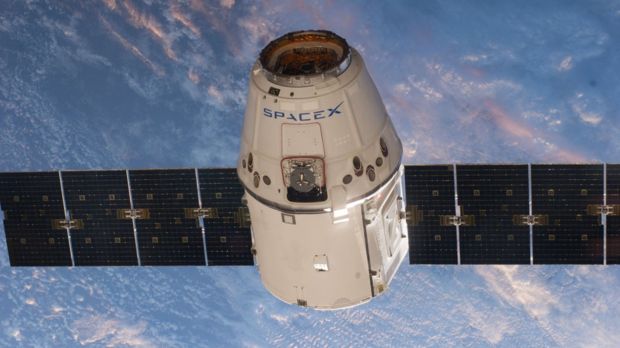
Nasa SpaceX launch: How we got to this point
by Paul RinconElon Musk's SpaceX will launch people to the space station on Wednesday. But why is a private company sending astronauts into space for Nasa?
To understand the background to this historic launch with the Crew Dragon spacecraft, we need to go back almost 20 years to a tragic accident.
On 1 February 2003, the space shuttle Columbia broke apart while re-entering the Earth's atmosphere. All seven astronauts aboard perished in the disaster.
The loss of Columbia and its crew was the trigger for a dramatic shift in direction for America's human spaceflight programme.
On 14 January 2004, President George W Bush announced that the space shuttle would be retired after completion of the International Space Station (ISS). In its place, America would build a new vehicle capable of returning astronauts to the Moon.

The following year, Nasa chief Mike Griffin announced that the completion of the ISS would, for the first time, open up commercial opportunities for the routine transportation of cargo and astronauts to low-Earth orbit.
This, Griffin reasoned, was required to free up enough funds to achieve a Moon return. Nasa established a Commercial Crew & Cargo Program Office (C3PO) to oversee the effort.
The first part of this commercial vision - ferrying supplies and other cargo to the space station - would be fulfilled by SpaceX's original Dragon spacecraft and the Cygnus vehicle built by Orbital Sciences.

In 2008, Barack Obama became president. His administration kicked off a review of the human spaceflight programme, which led to the cancellation of his predecessor's plan to return to the Moon (known as Constellation).
However, the Obama administration favoured the continued commercialisation of space. After the space shuttle was retired, Nasa had to pay Russia tens of millions of dollars per seat to fly its astronauts to the ISS on the Soyuz vehicle, which launches from Baikonur Cosmodrome in Kazakhstan.
Congress was initially sceptical about the Commercial Crew Program and did not provide sufficient funds at first. But Charles Bolden, the astronaut who took over from Griffin as Nasa chief, persisted and eventually secured the support he needed.
From their initial $50m Nasa investment in the programme in 2010, the space agency whittled several competing companies down to two - SpaceX and Boeing - in 2014.
Since then, they have been refining and testing their spacecraft designs.

It hasn't been plain sailing for either company, though. In 2016, a Falcon 9 rocket blew up on the launch pad. Then, in 2019, a Crew Dragon capsule exploded during testing on the ground. No one was hurt in either event.
These mishaps and others introduced delays to a timeline which would originally have seen SpaceX launch crew to the space station in October 2016. Boeing experienced a timing anomaly during an uncrewed test flight last year that prevented it docking with the space station.
But last year, SpaceX performed a triumphant launch of the Crew Dragon without astronauts. Using automated procedures, the capsule successfully approached and docked with the space station.
It was carrying a mannequin called Ripley - after Ellen Ripley, the protagonist in the Alien movies - decked out with sensors to measure the G forces experienced during flight - particularly launch and landing.
That mission, together with the successful test of the crew abort system, opened the door for today's historic flight from Kennedy Space Center in Florida.